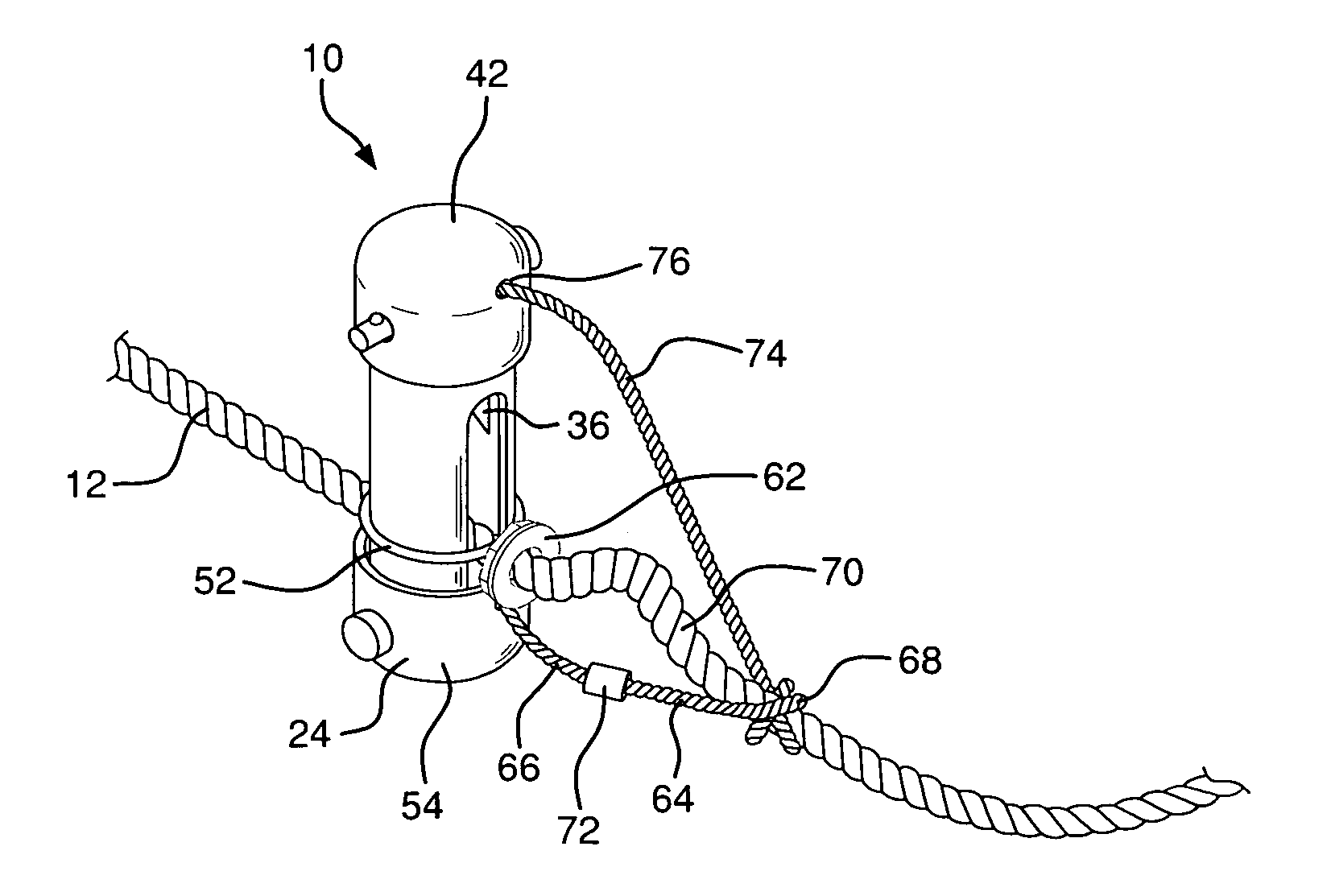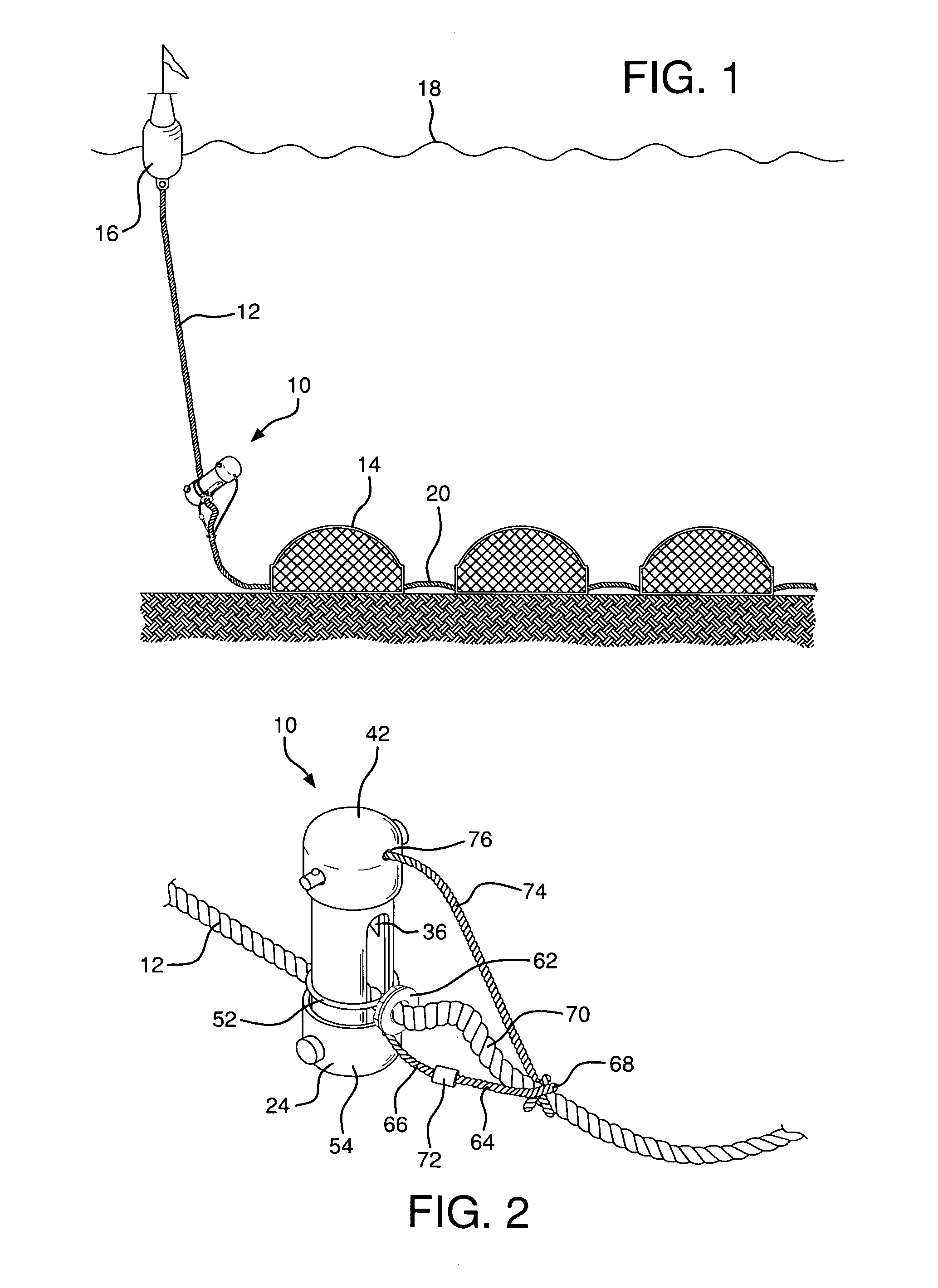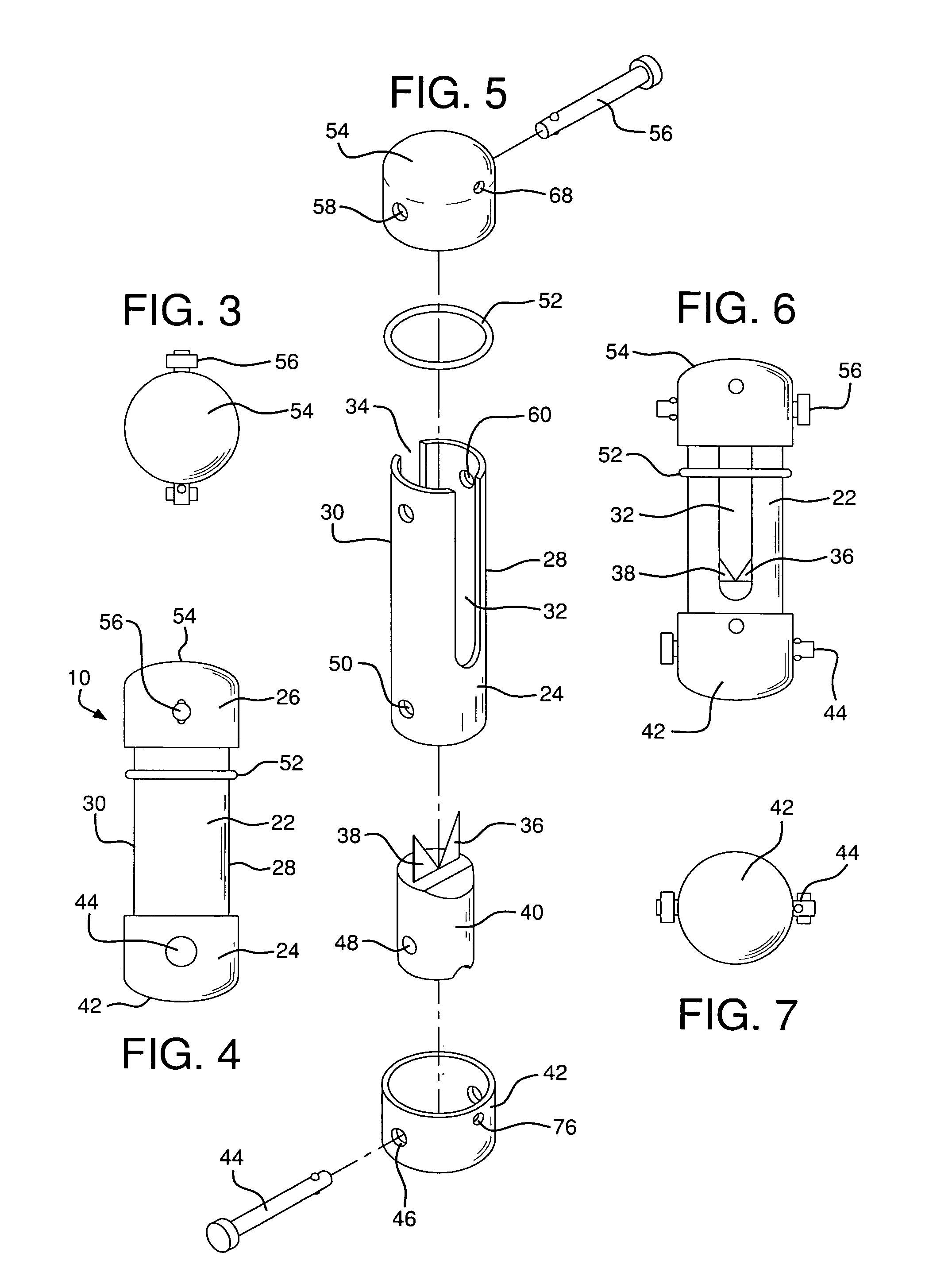Thwartable bottom link for vertical line
a technology of vertical line and bottom link, which is applied in the field of thwartable bottom link for vertical line, can solve the problems of adversely affecting the commercial fishing industry, undesired outcomes, and the inability to keep traps coupled to their associated surface buoys or other markers through vertical lines, and achieves simple but effective effects
- Summary
- Abstract
- Description
- Claims
- Application Information
AI Technical Summary
Benefits of technology
Problems solved by technology
Method used
Image
Examples
Embodiment Construction
[0027]Referring now to the drawings in detail wherein like reference numerals have been used throughout the various figures to designate like elements, there is shown in FIGS. 1 and 2 a thwartable link for a vertical line constructed in accordance with the principles of the present invention and designated generally as 10. FIG. 1 shows the link 10 in use in the ocean while FIG. 2 is a perspective view of the link connected to a vertical line.
[0028]As shown in FIG. 1, the link 10 of the present invention is connected to the lower end of a vertical line 12 that extends from one end of a series of lobster traps 14 to a buoy 16 floating on the surface of the ocean 18. Although only three lobster traps 14 are shown in FIG. 1, it should be readily apparent that there are normally a significant number of traps that are employed and they are connected in series through ropes 20. Depending on location, the length of the vertical line 12 may be one hundred feet or may be several hundred feet ...
PUM
 Login to View More
Login to View More Abstract
Description
Claims
Application Information
 Login to View More
Login to View More - R&D
- Intellectual Property
- Life Sciences
- Materials
- Tech Scout
- Unparalleled Data Quality
- Higher Quality Content
- 60% Fewer Hallucinations
Browse by: Latest US Patents, China's latest patents, Technical Efficacy Thesaurus, Application Domain, Technology Topic, Popular Technical Reports.
© 2025 PatSnap. All rights reserved.Legal|Privacy policy|Modern Slavery Act Transparency Statement|Sitemap|About US| Contact US: help@patsnap.com



